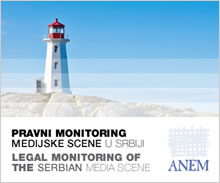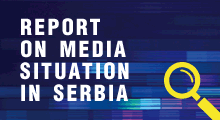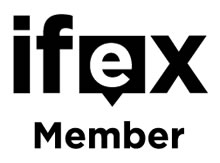12. 02. 2006
INFORMING CITIZENS IN HIGHLY RESTRICTED ENVIRONMENTS
Beginning in late 1980s, the independent media in Serbia had been suppressed, persecuted, harassed and attacked by the former Yugoslav government led by Slobodan Milosevic. Using different tactics, the ruling regime created an environment hostile to the free press.
In response, the Association of Independent Electronic Media, decided to develop a system for exchanging of news between TV stations. During the ruling of Slobodan Milosevic ANEM was the fortress of Serbian independent journalism.
The first decision of the ANEM's management was to establish the Technical Committee – an expert's body, aimed to do research and application of novel low-budget technologies to ANEM's stations. Several months before the Yugoslav federal elections on September 24, 2000 , ANEM Technical Committee proposed a project offered a suitable solution for the exchange of news.
To estimate the importance of such a project, two aspects have to be considered. The aspect related to the political constraints lies in the fact that the violent reactions of the regime against the media and citizens in the eve of democratic changes were real threat. Complete banning of free media and banning of public rallies were expected. Such action of the regime would have caused dramatic events, including clashes of police with citizens resulting in a number of injured or even dead. Dark forebodings related to the total suspension of the freedom of thought, expression and the press encouraged the ANEM's management to prepare its stations for forthcoming events. The Technical Committee seriously faced the following assignment: establishing of a system for production and the exchange of urgent news, with high redundancy and capability to survive in a hostile political environment, using low-budget technical solutions.
The second important aspect was technical constraint. Usual method for the exchange of video material between stations is by using the network of expensive microwave transmitters, but a lack of funds in the independent media as well as the state-controlled licensing of transmitting equipment excluded this solution. Other technical possibilities had to be considered, and there was nothing left for the Technical Committee to do but to propose using public communication services. Unfortunately, these services were ruined during the long period of sanctions and NATO bombing, and nothing but public telephony system was available. Very demanding user's requirements became more complex: a need for the reliable exchange of high-quality video (i.e. large video files) through devastated and state-controlled public telephony system, as fast as possible.
All the technologies applied in this project existed in infant forms and the application of MPEG-4 compression standard in this project became one of the earliest attempts in using it in professional media environment.
Thanks to this system, the citizens of the biggest cities in Serbia had opportunity to see the events influenced on the fall of Milosevic's regime and to participate in "Serbian smooth revolution" that took place on October 5, 2000 .
After democratic changes in Serbia , the system was re-designed and today it is the biggest network of news branch offices in South-Eastern Europe involving independent media and free lancers from five countries.
Paper related to above mentioned project is published in Informing Science Journal (http://inform.nu/Articles/Vol8/v8p245-262Spasic.pdf).
-
No comments on this topic.





